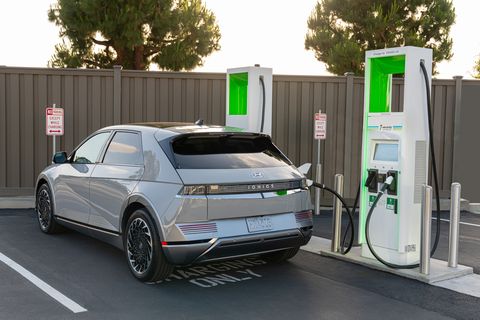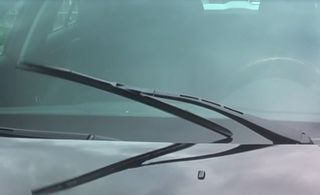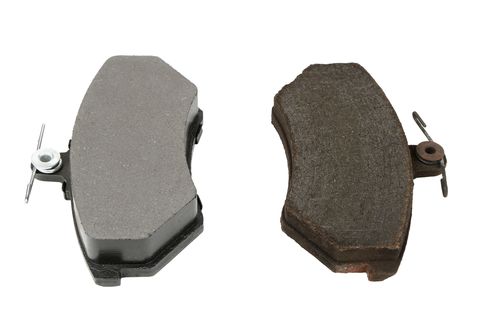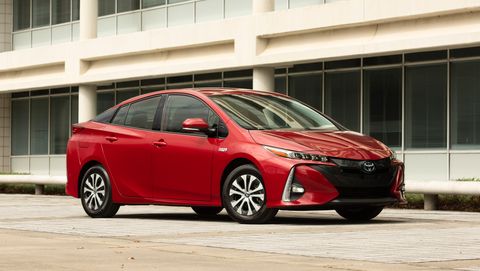Electric Car Maintenance: Everything You Need to Know

Electric motors have far fewer moving parts than internal combustion engines. This means electric cars often require far less maintenance (and can be cheaper to operate) than their gas-burning counterparts. Still, EVs require regular maintenance.
This includes familiar tasks such as rotating the tires, replacing various fluids, and changing out cabin air filters. There are also a number of EV-specific services that drivers of these battery-electric vehicles need to keep on top of.
Battery Maintenance
The National Renewable Energy Laboratory of the United States predicts today’s EV batteries will have service lives between 12 and 15 years if used in moderate climates. This falls to between 8 and 12 years if regular use occurs in extreme environments.
Regardless, EV batteries require next-to-no maintenance throughout their service life. That said, there are a number of things drivers can do to extend the service life of their EV’s battery pack.
Steer Clear of Extreme Temperatures
Extreme temperatures (both hot and cold) are Kryptonite to batteries. Automakers factor this into the development of their EVs, fitting them with the necessary auxiliary cooling and heating systems to help keep the temperature of the battery in acceptable levels.

Electrify America
Don’t Plan to Use Fast Chargers All the Time
Despite their convenience in rapid recharging, fast chargers degrade battery packs at a quicker rate than slower 120- or 240-volt charging. However, just how much fast charging impacts battery life isn’t known precisely in these relatively early days of modern EVs. Of course, in a road-trip scenario fast charging is necessary and there’s no reason to avoid it. But buying an EV with the plan to use fast charging exclusively isn’t a great idea, both from a battery life and a cost perspective. Fast charging costs three- to four-times more per kilowatt-hour of energy than you pay at home, a price that can bring the fueling cost of EVs on par with gas-powered vehicles. For example, we found it’s possible to pay $100 to fast charge a Hummer EV from empty to full.
Try Not to Fully Charge or Deplete the Battery
Batteries degrade more quickly when charged to full capacity or when depleted of all their energy. On the plus side, many manufacturers prevent full-capacity charging in order to assist in the battle against battery degradation. Most cars have settings to charge to a level less than 100 percent, and many automakers suggest charging to a level of 85- or 90-percent for daily use.

EV Maintenance vs. Gas Cars
Converting electricity into mechanical energy creates heat, and like gas cars, electric vehicles need to keep their powertrain components cool to ensure everything continues to work as it should. Some use air to do this, while others use some form of coolant or refrigerant to prevent components from overheating.
Check the Cooling System and Wiper Fluid
For EVs that use coolant or the like, it may be necessary to flush or recharge the system periodically. The Ford Mustang Mach-E and F-150 Lightning owner’s manuals recommend checking the integrity of cooling system hoses, as well as the cooling system level and strength, at six-month intervals. Meanwhile, the Porsche Taycan owner’s manual recommends checking coolant levels as part of the car’s routine service.
Regardless of what’s powering your car, you’re going to need to regularly refill your windshield washer fluid. Same goes for replacing the windshield wipers, as well.

Getty Images
Keep an Eye on Brake Fluid and Pads
Similarly, both EVs and gas cars rely on brake fluid to modulate their binders. Flushing and replacing this fluid at regular intervals is a necessary service no matter your vehicle’s powertrain. Though replacement times vary between vehicles and manufacturers, Ford recommends replacing the brake fluid in the Mach-E and Lightning every three years.
Brake pads are also something EV drivers need to keep an eye on. The good news is that an EV ought to eat pads and rotors at a far slower rate than a gas car. Credit electric motors’ regenerative braking function, which allows the motor to slow the vehicle by recovering its kinetic energy (and subsequently feeding that energy back into the battery pack). Though EVs still rely on their mechanical brakes, they tend to use them more infrequently, which subsequently puts less wear on pads and rotors.
The fact that the brakes aren’t exercised as much on an EV is exactly why Tesla’s service schedule includes lubricating the brake calipers every 12 months or 12,500 miles in areas that use salt to melt snow and ice. That service cost us about $100 each time, roughly oil-change money on a gas-powered car, on our long-term Model 3.
Tire Wear
Maybe this one’s a bit obvious, but yes, you still need to replace the tires on your EV. In fact, you may even have to replace them more frequently. Partial blame goes to the extra weight of EVs (batteries are heavy).
The Michelin Primacy MXM4 tires on our long-term Tesla Model 3, for instance, have less tread depth than typical all-season tires. We suspect this is to help boost the range figure. But this decreases these all-season tires’ lifespan. The ones mounted to our Model 3 required replacing after 30,000 miles and set us back a whopping $1157.

Toyota
EV Maintenance vs. Hybrids and Plug-in Hybrids
Since hybrid and plug-in hybrid cars have gas engines on board, their maintenance routines are closer to those of a gas-powered car than an EVs. Nonetheless, these vehicles’ electric motors allow them to slow down via regenerative braking. This means that hybrid and plug-in hybrid vehicles’ brake rotors and pads tend to have longer service lives than those of gas cars.



